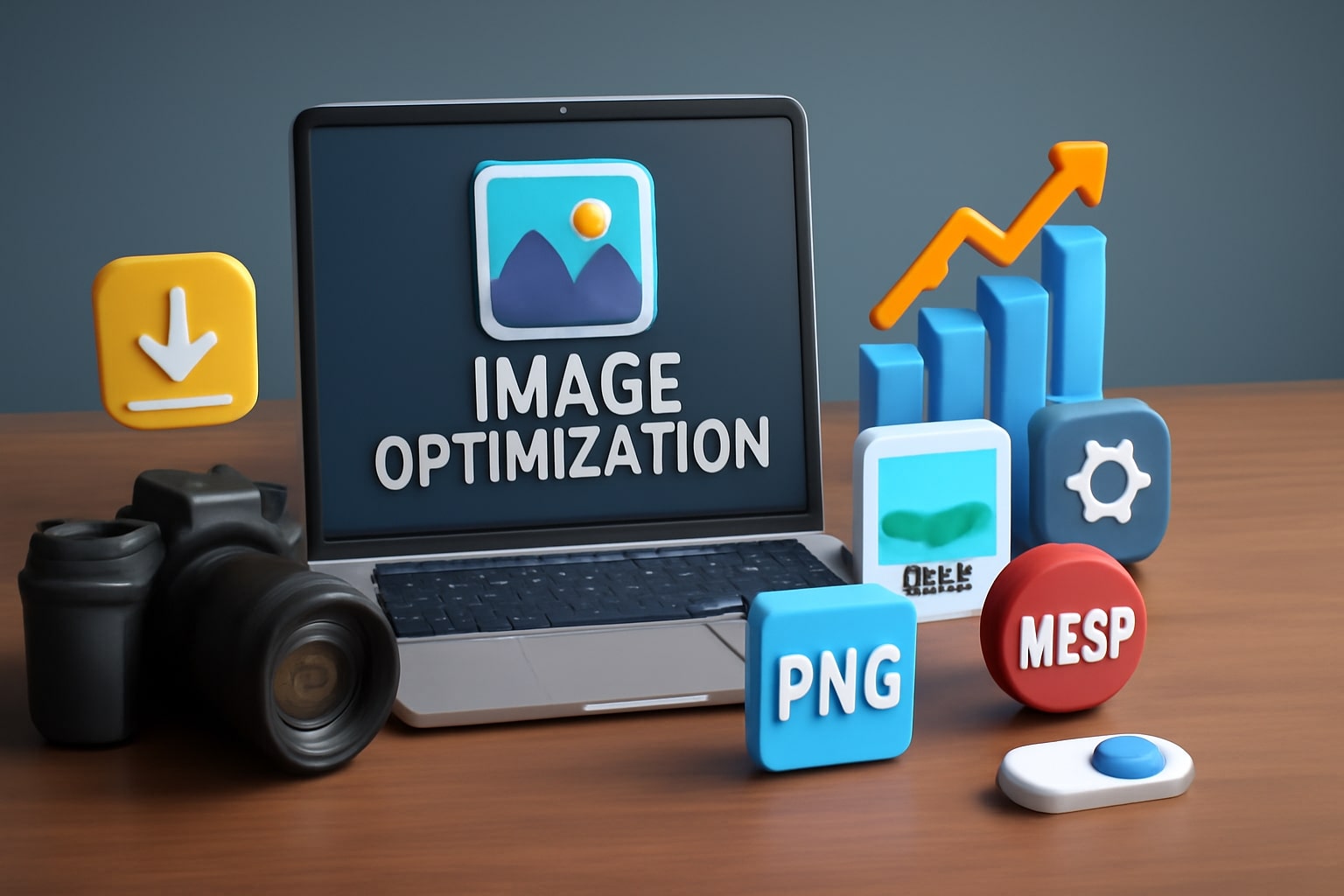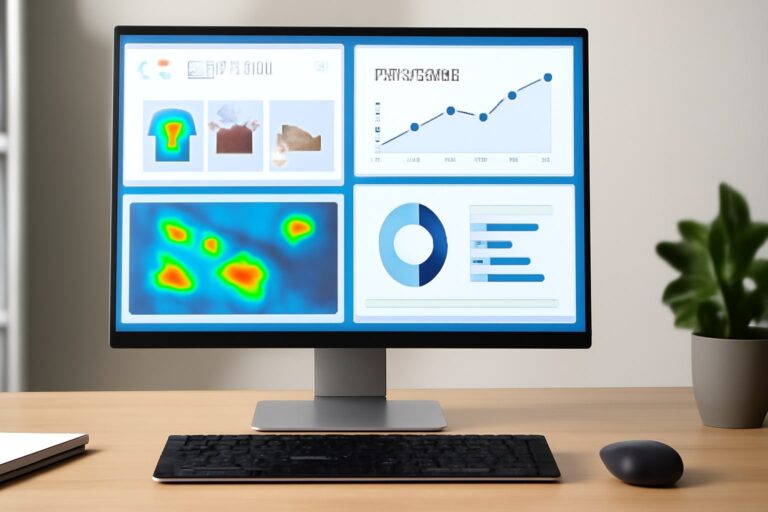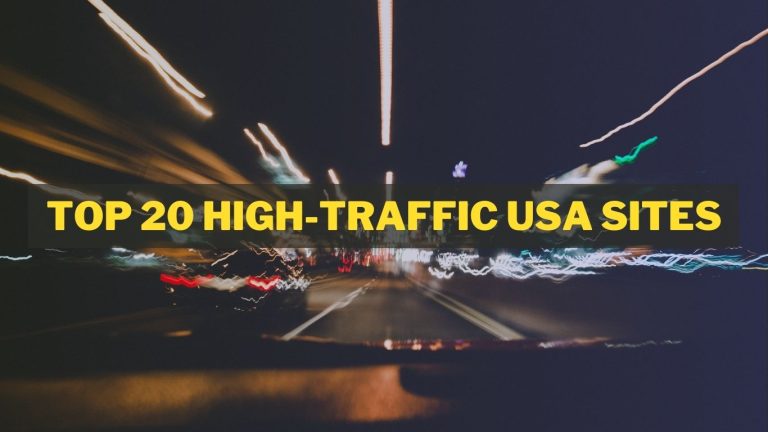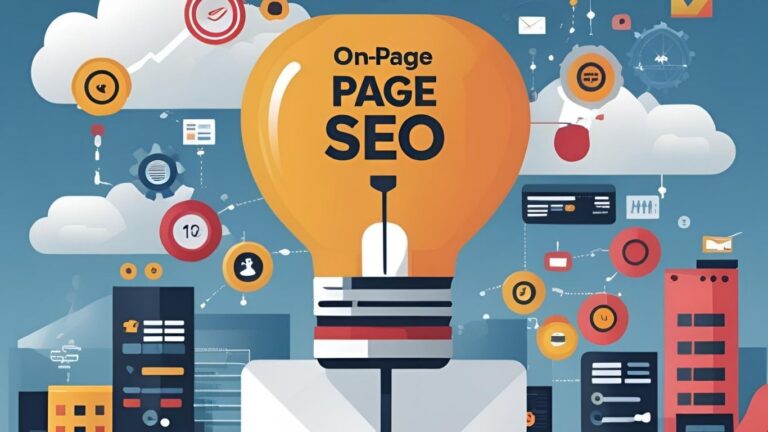5 Simple Steps for Effective Image Optimization to Boost Web Performance #ImageOptimization #WebPerformance #SEO
5 Simple Steps for Effective Image Optimization to Boost Web Performance
Introduction: Image Optimization for Web Performance
When it comes to improving website speed, one of the most effective yet often overlooked strategies is image optimization for web performance. Images are often the largest files on a website, and they can significantly slow down your page load times if not properly optimized. Picture this: You’re browsing a website, and it takes forever to load, right? Chances are, the culprit is large, unoptimized images.
In this article, we’ll dive into 5 simple, actionable steps for optimizing your images.
These steps not only enhance your site’s loading speed but also improve user experience and SEO ranking. Whether you’re a seasoned developer or a business owner looking to improve your website’s performance, these steps are designed to make the process as smooth as possible. So, let’s jump in and discover how you can optimize images like a pro!
Step 1: Image Compression Techniques
One of the first and most effective steps in image optimization for web performance is compression. Compression reduces the file size of images without sacrificing much quality. This is crucial for speeding up your site and improving SEO.
Lossy vs. Lossless Compression
You may have heard the terms “lossy” and “lossless” when discussing compression. Here’s the difference:
Lossy Compression: This method reduces file size by permanently removing some image data. While it decreases quality slightly, the result is a much smaller file. Think of it like squeezing a sponge—most of the water is still there, but some of it is lost in the process.
Lossless Compression: Unlike lossy, this method compresses the image without losing any data. The image stays as high quality as the original, but the reduction in size may not be as dramatic.
Tools for Image Compression
To get the job done efficiently, you’ll need the right tools. Here are some popular options:
TinyPNG: Excellent for compressing both PNG and JPEG images. It maintains high quality even with significant compression.
ImageOptim: Perfect for Mac users, this app offers a simple drag-and-drop interface for fast compression.
Photoshop: If you’re looking for more control, Photoshop allows you to manually adjust the quality of your images.
Affiliate Opportunity: For more advanced options, check out TinyPNG and save both time and bandwidth with their professional plans.
Choosing the Right Compression Method
So, how do you choose between lossy and lossless? If you’re working with large images that don’t require absolute detail, lossy compression is usually the way to go. For images like logos or infographics that require sharp details, lossless is better.
Step 2: Choosing the Best Image Formats
Not all image formats are created equal. Image optimization for web performance is also about picking the right file format for your images. Choosing the right format not only affects the image quality but also the file size.
JPEG, PNG, and WebP Explained
Here are the most common image formats:
JPEG: Perfect for photographs or images with many colors. It offers high compression and decent quality.
PNG: Best for images that require transparency, like logos or icons. The file sizes are larger than JPEGs, but the quality is superior.
WebP: This modern format offers excellent compression while maintaining image quality. It’s supported by most major browsers, and it’s an excellent choice for image optimization for web performance.
When to Use Each Format
Here’s when you should use each format:
JPEG: For photographs or images with gradients and many colors.
PNG: For images that require transparency or sharp details, like icons or logos.
WebP: For everything else! It strikes the best balance between quality and file size.
Image Formats and SEO Benefits
Using the right image format can directly influence your page speed, which is a ranking factor for SEO. Smaller file sizes mean faster load times, leading to a better user experience and higher chances of ranking well in search engines.
Affiliate Opportunity: To optimize WebP images quickly, try Squoosh, an online tool that can convert images to WebP with just one click.
Step 3: Implementing Lazy Loading
Lazy loading is a game-changer when it comes to improving image optimization for web performance. It allows images to load only when they are needed, i.e., when they come into the user’s viewport (the part of the page that is visible to them). This can make a huge difference in your site’s speed.
What is Lazy Loading?
In a traditional web page load, all images are loaded immediately, whether they are visible to the user or not. With lazy loading, images only load when the user scrolls down to them. This reduces initial load times and conserves bandwidth.
Benefits of Lazy Loading for User Experience
Faster Page Load: Since only the images above the fold (visible on initial load) are loaded, users experience faster page load times.
Improved User Engagement: A faster-loading page means users are more likely to stay longer and engage with your content.
How Lazy Loading Boosts SEO
Page speed is a significant ranking factor in SEO, and lazy loading can dramatically improve your page speed. By optimizing how images load, you enhance the overall user experience, which Google values highly.
Step 4: Image Dimensions and Scaling
Did you know that oversized images can drag down your website’s performance? Ensuring that your images are properly sized is a crucial aspect of image optimization for web performance.
Setting the Right Image Size
Images that are too large for their intended display area waste bandwidth and increase load times. For example, an image that’s 3000px wide, when displayed at only 600px, is unnecessarily large. It’s like buying a suit that’s five sizes too big and then tailoring it to fit—it’s a waste of fabric and resources!
Automatic vs. Manual Resizing
Automatic Resizing: Many CMS platforms, like WordPress, can automatically resize your images for you. Plugins like Smush and EWWW Image Optimizer can help you automatically resize and compress images as you upload them.
Manual Resizing: If you’re manually editing images, make sure to resize them before uploading to ensure they fit perfectly with your website layout.
Impact on Page Load Time
Correctly sized images load faster, which improves the user experience and helps reduce your bounce rate. This is especially important for mobile users, who may not have fast internet connections.
Step 5: Optimizing Alt Text and Metadata
We often forget that images are more than just visual elements on a page. They also play an important role in image optimization for web performance from an SEO standpoint. Optimizing alt text and metadata is crucial for making images more accessible and discoverable by search engines.
Importance of Alt Text for SEO
Alt text serves as a description of the image for search engines and screen readers. When Google crawls your website, it relies on alt text to understand what the image is about. Including relevant keywords in your alt text can boost your SEO rankings.
Writing Effective Alt Text
Be Descriptive: Use clear, concise language to describe the image.
Include Keywords: If possible, include the focus keyphrase, like “image optimization for web performance.”
Keep It Short: Avoid keyword stuffing and focus on clarity.
etadata and Its Role in Web Performance
In addition to alt text, other metadata elements such as captions, titles, and descriptions can help search engines index your images. These also improve accessibility for users who rely on assistive technologies.
Understanding Web Performance Metrics
When it comes to image optimization for web performance, understanding how images affect your overall site performance is crucial. Core Web Vitals are a set of metrics that Google uses to evaluate the user experience on your website.
Core Web Vitals Overview
Core Web Vitals focus on three main metrics:
Largest Contentful Paint (LCP): Measures loading performance. Optimized images help you achieve a fast LCP score.
First Input Delay (FID): Measures interactivity. Faster image loading improves user interaction.
Cumulative Layout Shift (CLS): Measures visual stability. Properly optimized images prevent shifts in layout during loading.
How Image Optimization Affects Metrics
Optimized images contribute to better performance in all three Core Web Vital metrics. By reducing image file sizes and loading times, you improve the user experience, which is key for ranking higher in search results.
Mobile Optimization for Images
With over half of all web traffic coming from mobile devices, image optimization for web performance on mobile is more important than ever.
Adapting to Mobile Users
Mobile users often have slower internet speeds, and large images can result in frustrating load times. To optimize images for mobile:
Use responsive images that adjust to different screen sizes.
Compress images without sacrificing too much quality.
Why Mobile Optimization Is Essential
Google uses mobile-first indexing, meaning it predominantly uses the mobile version of your website for ranking and indexing. Optimizing images for mobile is critical to your SEO success.
Conclusion: Take Action and Optimize Your Images Today
Now that you’ve learned the 5 simple steps for image optimization for web performance, it’s time to take action. By implementing compression, selecting the best formats, using lazy loading, resizing images, and optimizing alt text and metadata, you’ll see significant improvements in site speed, user experience, and SEO ranking.
Don’t let slow image load times hold you back. Start optimizing your images today, and watch your website performance soar!
5-15 Bullet-Point Summary:
- Image optimization is crucial for improving website performance, enhancing SEO, and providing better user experiences.
- Compression reduces image file sizes without sacrificing quality, using either lossy or lossless techniques.
- Popular compression tools include TinyPNG, ImageOptim, and Photoshop, each offering different levels of control.
- Choosing the right image format (JPEG, PNG, WebP) can drastically affect both image quality and file size.
- JPEG is ideal for photos, PNG is perfect for images with transparency, and WebP balances compression and quality.
- Lazy loading ensures images load only when visible to users, improving page speed and reducing bandwidth use.
- Image dimensions should be set appropriately, ensuring that oversized images don’t negatively affect performance.
- Automatic resizing tools like Smush and EWWW Image Optimizer help maintain optimal image sizes.
- Alt text and metadata help search engines understand images and improve accessibility.
- Optimizing alt text should include relevant keywords for better SEO.
- Core Web Vitals (LCP, FID, CLS) are key metrics for evaluating web performance, with image optimization impacting all three.
- Mobile optimization is essential as many users access sites via mobile devices, which typically have slower internet speeds.
- Using responsive images that adapt to mobile screens is crucial for image optimization for web performance.
- Optimizing images can boost SEO, enhance user engagement, and reduce bounce rates.
- By following these steps, you’ll achieve faster load times and a higher-performing website.
FAQs
What is image optimization for web performance?
Image optimization for web performance involves reducing image file sizes to improve website load times, which directly enhances user experience and SEO ranking. Techniques include compression, resizing, and choosing the best formats.
Why should I compress my images?
Compressing images reduces their file sizes without compromising too much quality. This makes web pages load faster, improving user engagement and boosting your SEO.
Which image format should I use for my website?
JPEG is great for photos, PNG works best for images with transparency, and WebP offers excellent compression with good quality, making it ideal for general use.
What is lazy loading, and how does it help with performance?
Lazy loading only loads images when they come into view on the screen. This improves page speed and reduces initial load time, which is essential for optimizing web performance.
How can I resize images for my website?
You can resize images manually using tools like Photoshop or automatically through plugins such as Smush or EWWW Image Optimizer. Resizing ensures that images are appropriately sized for their display areas, improving load time.
How does image optimization impact SEO?
Optimized images reduce page load time, which is a key factor in Google’s ranking algorithms. Faster pages lead to better user experience, lower bounce rates, and improved rankings.
Can I optimize images without losing quality?
Yes, you can use lossless compression methods to reduce file sizes while preserving image quality. This is ideal for images like logos or icons where detail is important.
How does alt text improve SEO?
Alt text provides descriptions of images for search engines, allowing them to index images and understand their relevance to the page’s content. It also improves accessibility for users relying on screen readers.
Why is mobile optimization important for images?
With increasing mobile web traffic, optimizing images for mobile is essential. It ensures fast load times and a seamless user experience on mobile devices, which is a ranking factor for SEO.
What are Core Web Vitals?
Core Web Vitals are metrics Google uses to assess website performance, focusing on loading speed, interactivity, and visual stability. Optimizing images can significantly improve these metrics.
Can lazy loading hurt my SEO?
No, lazy loading can actually improve SEO by speeding up the initial page load time. However, it’s important to ensure that images load properly as the user scrolls down the page.
What tools can help with image compression?
Popular tools include TinyPNG, ImageOptim, and Photoshop. These tools allow you to compress images while maintaining quality.
What’s the best way to optimize images for e-commerce sites?
For e-commerce, use smaller image sizes, WebP format for faster loading, and lazy loading to improve load times on product pages, thus enhancing the user experience and driving conversions.
How do I track the impact of image optimization on my site?
Use Google’s PageSpeed Insights or Lighthouse to measure performance improvements after optimizing your images. These tools will give you data on load times and the impact of your optimization efforts.
Can image optimization increase sales for my business?
Yes! Faster-loading images improve user experience, reduce bounce rates, and increase conversion rates. This is especially important for e-commerce sites where quick page loads are critical to keeping potential customers engaged.
Explore These Valuable Resources
To dive deeper into the world of image optimization for web performance, we’ve curated a list of essential resources that will enhance your knowledge and keep you updated with the latest trends and best practices.
Google’s Web Vitals Documentation
Google Core Web Vitals – Explore Google’s official guide to Core Web Vitals, which are vital for improving user experience and SEO. Understanding these metrics is crucial for optimizing images and ensuring your website performs well in search rankings.
TinyPNG – Image Compression Tool
TinyPNG – TinyPNG offers both free and paid services to compress your images effectively while maintaining their quality. This tool is perfect for anyone looking to reduce file sizes without compromising on image clarity.
Smush Image Optimization Plugin for WordPress
Smush – This popular WordPress plugin helps automate image compression and resizing, making it easier to optimize images for web performance. It also provides tools for bulk image optimization.
WebP Image Format for Better Performance
Google WebP – Learn about the WebP image format, which provides superior compression and quality for web images. It’s a great way to enhance both performance and SEO.
ImageOptim – Efficient Image Compression
ImageOptim – ImageOptim is a powerful tool for Mac users that compresses images without losing quality. It’s ideal for web developers and digital marketers looking to optimize images quickly.
Lighthouse – Performance Analysis Tool
Google Lighthouse – Lighthouse is an open-source tool by Google that helps analyze your website’s performance, including image optimization and loading speed. It’s an essential resource for tracking improvements.
Google PageSpeed Insights
PageSpeed Insights – This tool from Google allows you to test the performance of your website and provides specific suggestions for optimizing your images and other elements to speed up your site.
Web.dev – Image Optimization Guide
Web.dev Image Optimization – This comprehensive guide from Google’s Web.dev offers tips and tools for optimizing images, ensuring they load quickly and contribute to a better overall website performance.
EWWW Image Optimizer Plugin for WordPress
EWWW Image Optimizer – Another powerful WordPress plugin, EWWW Image Optimizer helps automatically optimize images on your website. It offers both lossless and lossy compression options.
Cloudinary – Advanced Image Optimization
Cloudinary – Cloudinary provides cloud-based solutions for image optimization, offering advanced features like automatic format conversion and image resizing. It’s perfect for scaling websites and ensuring top-notch performance across various platforms.
These resources will help you master the intricacies of image optimization for web performance, whether you’re just getting started or you’re already optimizing images at scale. By utilizing these tools and guides, you can significantly improve your website’s speed, user experience, and SEO ranking. Explore these expert resources to stay ahead in the ever-evolving field of web performance.
Blog Recommendation
For more insights on optimizing your digital presence, check out this blog on web design, development, and online marketing strategies.







